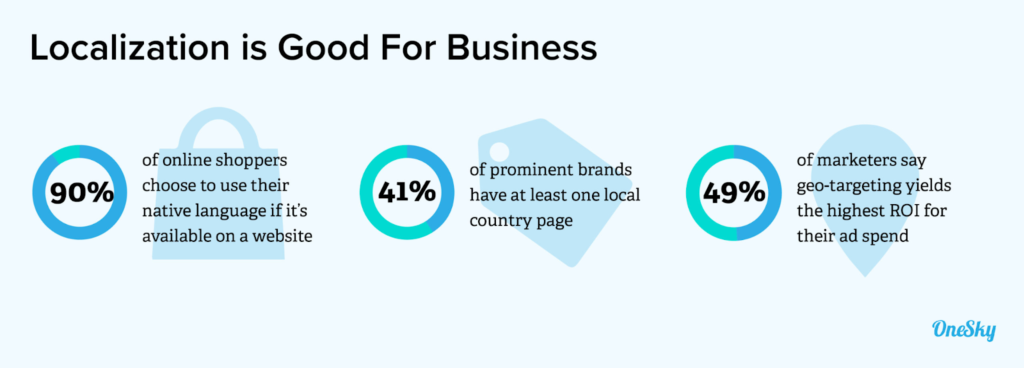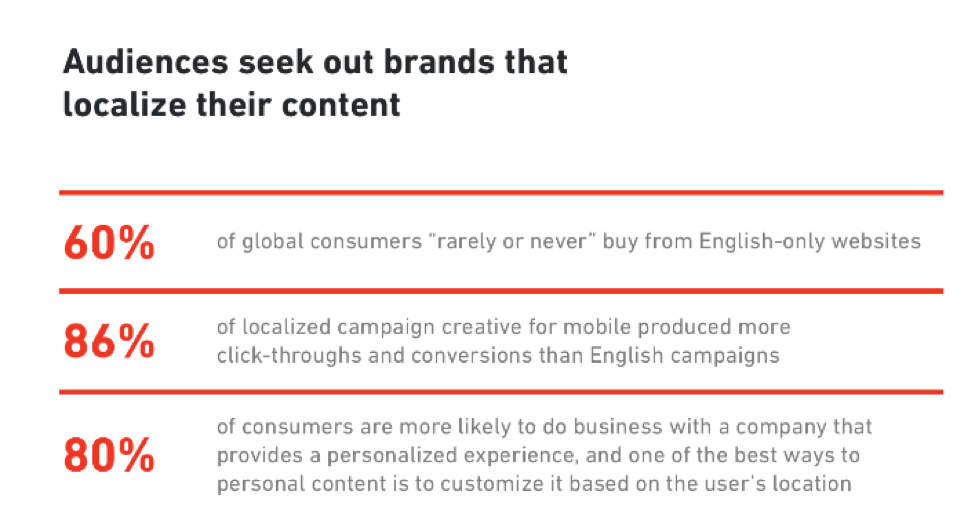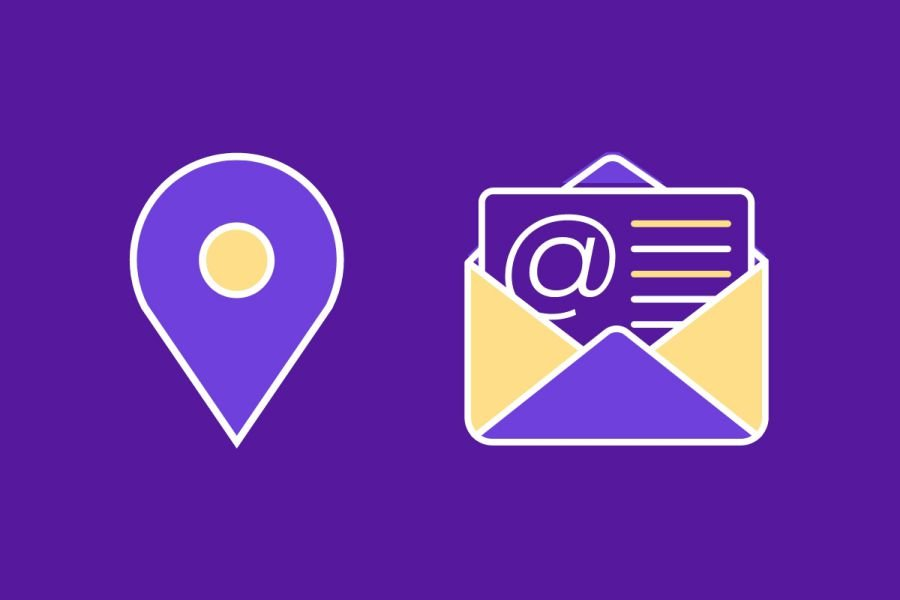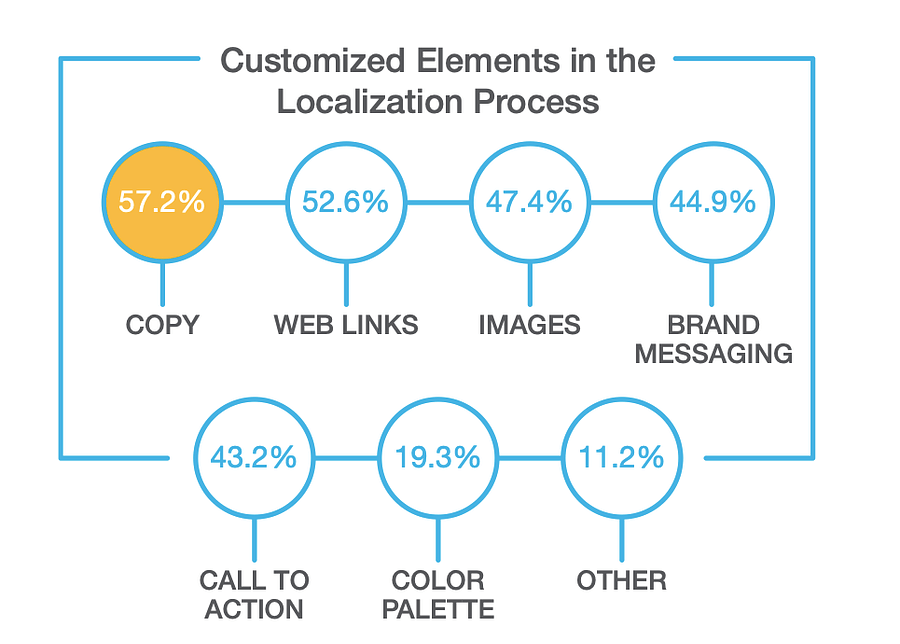
Table of Contents
- What Is Email Localization?
- The Significance Of Email Localization
- Common Email Localization Pitfalls To Avoid
- Essentials Of Email Campaign Localization
- Key Takeaways
- Conclusion
- FAQs
Every local market in the global space is unique in its culture, language, trends, consumption habits, and other preferences. The one-size-fits-all approach simply doesn’t apply to such markets.
Thus, if a company wishes to be successful in international markets, it must find a way of reaching its local customers. Email localization is an effective marketing strategy that allows companies to thrive in the highly competitive global marketplace.
What Is Email Localization?

Email Localization is a way to increase your revenue, reach new customers, and expand your customer base. Localization allows you to customize your email marketing campaign’s content so that it becomes relevant for the people belonging to different cultures and ethnicities, speaking different languages.
Many people believe email localization is simply a word-to-word translation of email content. However, it’s much more than just language translation.
Yes, customers are more likely to purchase products offered in their native language. But we can’t just focus on text alone while localizing emails. We will have to add graphics, images, and other components.
Even elements like color impact a message. Different cultures have different views on colors. While red is associated with wealth and happiness in some cultures, others see it as a sign of danger and evil. Thus, your email localization strategy’s success may also depend on the colors you use.
Also, in many cases, you reap greater benefits by avoiding images and focusing on text, even though images are considered a great marketing hook. All this explains why you can’t succeed using a one-size-fits-all localization strategy.
You need to keep in mind that no matter how different your email looks for your international audiences, your brand voice should be consistent.
Lastly, it is important to consider different cultural nuances and preferences when creating your email localization strategy, including the different levels of formality and politeness practiced across cultures and countries.

The Significance Of Email Localization
You may be asking yourself why you should take the time to localize your emails. The short answer would be not everyone can speak English. According to the Washington Post, English is spoken by only 4.83 percent of the world’s population. More than 95 percent of the global population doesn’t know English. This explains why email localization is indispensable and imperative.
We have mentioned above that people are much more inclined towards purchasing products advertised in their native languages. So, it’s obvious that they will respond more positively to emails written in their native tongue.
LISA (Localization Industry Standards Association) conducted a study and found that there was an average return of 25 dollars for every dollar invested in localization. This shows the financial benefits of localizing emails.

A higher ROI is another reason to localize emails. Popular author and web influencer Neil Patel noticed a nearly 50% rise in web traffic after implementing plugins on his website that translated the emails into several languages.
So, localizing emails almost guarantees increased customer engagement and higher returns on investments made in email marketing.
Common Email Localization Pitfalls to Avoid
Here are some common email localization mistakes you should avoid.
Not attaching sufficient importance to email localization
Not considering email localization an important part of the overall content strategy is probably the biggest mistake marketers make.
Marketers wouldn’t risk publishing a blog or website in Italy without verifying that the images and text are culturally appropriate. But they don’t often think twice before sending an email that isn’t properly localized.
Why? Because it is difficult to manage hundreds of emails, even if they are in English. Add multiple localizations required for every email, and it can quickly become overwhelming.
We can expect more companies to incorporate email marketing into their overall content strategy in the future. And for email management, they will likely use workflows and systems similar to those used for managing other types of content.
Such a system will allow emails to be stored, optimized, and created, much like content management systems dealing with blogs and websites. Hence, any such innovation will make it easier to manage emails in multiple languages. Until then, marketers responsible for email localization must act responsibly to ensure every message is relayed correctly.
Thinking a single (English) template will take care of all others

Relying too heavily upon the English version of an email to be a starting point for all localizations is another common mistake. It can be tempting to send just the English version to translators when managing communications across multiple markets.
But it’s important to understand that sometimes translating a piece of text without considering the nuances in word meanings can lead to serious problems. It’s possible to end up with a literal translation that sends out the wrong signals.
Localization is getting your message across in the language and culture of your target audience in a culturally appropriate manner. So, even if you send the same email out for localization across different cultures, make sure the end result doesn’t mean anything awkward or hurt cultural sensitivities.
Thinking that localization is all about language
Brands must consider the intricacies of a language when marketing locally. It might not be enough to translate in a single language for an entire country.
It is easy to translate an email into Spanish and then use it across the country. But suppose you localize an email to a Madrid customer using Castilian Spanish. In that case, the associated idioms could be interpreted as offensive if sent to someone in Barcelona, where Catalan is the primary language.
It is important to consider regional differences that could exist within a language. A language can vary depending on where the target audience is located.
Localizing content requires that you also consider branding. Brand messages must be consistent across all markets.
Your Chinese market might see your new logo in bright red as luck, but it could also evoke caution elsewhere. Does that mean you adapt your logo design, color, or tagline with different markets? No! It’s not a good idea to change your brand identity. Instead, consider these markets when creating or updating brand assets. This will ensure brand consistency across the globe.
Don’t forget about currency and time zones. Localization may also mean customizing your message based on the recipient’s time zone.
Uber’s ride offer emails are a great example. To personalize their subject lines, they use timestamp information, such as “Your Saturday morning Uber trip.” They also use localization to ensure that the subject line is relevant for each market.
The key takeaway here is that cultural differences extend far beyond languages. So, it is important to have localized content consistent with a market’s cultural nuances.
Switching translation/localization partners
Another common mistake marketers make is failure to maintain a consistent partner when localization isn’t handled in-house.
It takes time to understand, develop and echo a brand’s voice. It’s not something that can be copied in a flash. Your localization team should be as familiar as possible with your brand voice as you are.
Thus, having the right people and processes for email localization and not changing them often could be the difference between success and failure.
Essentials of Email Campaign Localization

Copy considerations
The first step is to get past the language barrier to engage a global audience. And no, Google Translate is not the answer.
Instead, make using multilingual email writing services a priority for your email campaigns, focusing on cultural variations. You will need to create a team of native writers based on the geographic areas you intend to serve.
The three most important things that should be taken into consideration when creating a copy are:
The message:
It should be crisp, clear, and relevant.
The subject line:
Keep your subject lines concise. Try to get a little creative here, as you will need to say what you intend to say in fewer words. What you can efficiently convey in English in just 50 characters might need 80 characters in another language to be meaningful.
Call-to-action (CTA)
CTAs, just like subject lines, can become longer if they are translated into another language. This can make the designing process difficult. So, use words that are both widely understood in the target country and look visually appealing in your email, and try to keep the word count as close to the original as possible.
Design aesthetics
Email design aesthetics is vital because it acts as a hook for recipients. So, it is crucial to focus on the following design elements to deliver an effective localized email campaign.
Visuals
An average American customer would be fine with swimsuits in a newsletter, but it might be offensive for some customers from a more conservative country like Saudi Arabia.
Similarly, an email containing images of a beach but intended for subscribers in a landlocked country will not do justice to their imagination. So, you should avoid irrelevant imagery for your audience or could trigger a negative response.
Colors

Different people perceive colors differently. White is considered pure in the USA and is linked to matrimony, but it is associated with death in India. So, you must choose culturally appropriate colors for the target country.
Even big brands like McDonald’s lay great emphasis on colors. And that is why they use different color palettes depending on where they are located.
As a brand, you should consider the meanings of different images and colors in a country before creating visual content for its customers. It’s important to use colors that appeal to your target audience aesthetically and culturally.
Timing is everything
It is not a good idea to send an email with a great festive offer after the festival is over. It is important to consider seasonality and work schedules when sending emails overseas for an effective campaign. Imagine your target audience in Australia receiving a winter sales email while enjoying summer.
Do your research. There are reasons why you might have to treat different markets differently.
Selecting a local translator
It can be hard to find and work with a translator in your target country or region, but the results are well worth it. Here are certain things that you need to keep in mind:
Experience is key
Look for translators with extensive experience translating content within your industry when hiring. For instance, your translator should have knowledge of the Polish language and ITU laws if you are planning to send email campaigns to your subscribers in Poland.
Ask about their portfolio
Ask for samples of works that have been previously translated and have them checked by a native speaker.
It is often chaos when there are multiple translators, so it’s better to work with a single translator. This will ensure consistency across all digital platforms. Having too many translators means confusion, making things overwhelming to handle.
Share the context of your campaign
You can help your translator write effective copy by making them familiar with the context of your email campaign. Offer them all the help they would need to assess how much scope is available for editing the copy.
Finally, make sure they are familiar with the brand guidelines, writing style, and message tone to ensure a faster turnaround.
Email campaigns are typically time-bound. So, your localization and content teams must work hand-in-hand to meet deadlines.
Human translators vs. machine translators

The translation is only as good as the context. This means that context must be maintained when translating the text. The context, however, varies from country to country- words, colors, symbols, and visuals may have different meanings depending on where your target audience is located.
In such a scenario, an automated translator won’t be able to translate a piece of text with the same precision as a human translator. Thus, a human translator should be your choice.
Key Takeaways
- Email Localization allows companies to prosper in a highly competitive global marketplace.
- Email localization is not just about language translation; it entails much more.
- Essentials of a localized email campaign include copy, design, timing, and the likes.
- Human translators keep the context of a campaign in mind while translating an email. But you can’t expect the same from a machine. So, human translators always produce better localization results compared to automated translators.
- Something as seemingly trivial as color can also have a huge impact on an email campaign’s success.
Conclusion
More and more businesses are going global. However, many still don’t localize their emails for international customers and rely on a one-size-fits-all approach.
But marketers don’t understand is that a message failing to resonate with the audience will negatively impact the overall value of the product or service. Sending localized emails opens up doors for people to better connect with a brand.
Thus, localized email marketing is an easy and effective way to achieve significant business growth as it can improve customer experience, engagement, and subscriber loyalty for any brand.
FAQs
Email localization refers to adapting email content to be more relevant to people who speak different languages or are from different countries.
Email localization can be used for several types of marketing emails. Some are:
1. Informational emails
2. Lead nurturing emails
3. Newsletters
4. Transactional emails
Email Localization helps earn customers’ trust. As a result, the chances of engaging with your brand, making a purchase, or becoming loyal customers increase.
1. Focus on localization and not just on translation.
2. Hire local translators or localization experts.
3. Try to build memorable experiences.
4, Optimize for the mobile audience.
5. Consider cultural sensitivities.
Latest Blogs
Explore how Google’s 2025 AI search updates triggered ranking chaos. Learn actionable strategies to adapt your SEO for AI Overviews, zero-click searches, and SERP volatility. Stay ahead now.
Learn how to rank on AI search engines like ChatGPT, Perplexity, and Gemini by optimizing your content for authority, structure, and relevance. Stay ahead in AI-driven search with this strategic guide.
Explore the best healthcare SEO services for your medical practice. Improve online visibility and effectively reach more patients in need of your services.
Get your hands on the latest news!
Similar Posts

Content
10 mins read
What, How & When of Data-Driven Emails

Content
7 mins read
15 Bad Email Signature Examples to Never Copy in 2022

Design
5 mins read